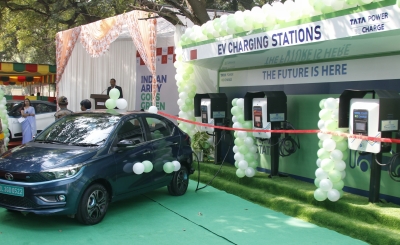NITI Aayog likely examining lifecycle emissions of EVs, hybrids
By IANS | Updated: July 28, 2025 13:24 IST2025-07-28T13:19:54+5:302025-07-28T13:24:45+5:30
New Delhi, July 28 As automakers deliberate upon whether EVs or hybrids should receive government subsidies, NITI Aayog ...

NITI Aayog likely examining lifecycle emissions of EVs, hybrids
New Delhi, July 28 As automakers deliberate upon whether EVs or hybrids should receive government subsidies, NITI Aayog has likely started examining the lifecycle emissions of electric, hybrid, and conventional vehicles to determine which technology is the cleanest.
Further, NITI Aayog Chairman BVR Subrahmanyam reportedly told industry leaders to stop expecting any more subsidies.
The vehicle manufacturers said while the government can discontinue the subsidies on two-wheelers or three-wheelers under the PM E-DRIVE scheme by 2026, the Centre should persuade states to lift the limitation on permits on commercial vehicles, according to multiple reports on Monday.
States currently cap how many commercial vehicle permits -- especially for electric two- and three-wheelers -- can be issued in particular states or cities. Industry leaders believe that these restrictions hinder the sale of commercial vehicles.
India has implemented several subsidy programmes to promote cleaner mobility, most notably Faster Adoption and Manufacturing of (Hybrid &) Electric Vehicles (FAME-II).
Under the PM Electric Drive Revolution in Innovative Vehicle Enhancement (E-DRIVE) scheme, which began on October 1, 2024, the Centre has allocated Rs 10,900 crore for subsidies to EVs, but Maruti Suzuki, Toyota India and Honda want to extend similar benefits to hybrids, arguing that hybrids are cleaner than conventional vehicles.
EVs have no tailpipe emissions; however, a 2023 study by the Indian Institute of Technology, Kanpur, found that their manufacturing, use, and scrapping emit more greenhouse gases than the same processes for hybrid or fossil fuel-based vehicles.
Electric car sales penetration is expected to cross 7 per cent by FY 28, subject to timely resolution of rare earth element (REE) disruptions and the government's continuous push to improve charging infrastructure in the country. India's EV fleet grew from just over 5,000 units in FY21 to more than 1.07 lakh units in FY25.
Meanwhile, over the past three years, the number of public EV charging stations in the country grew from 5,151 to 26,000.
Disclaimer: This post has been auto-published from an agency feed without any modifications to the text and has not been reviewed by an editor
Open in app